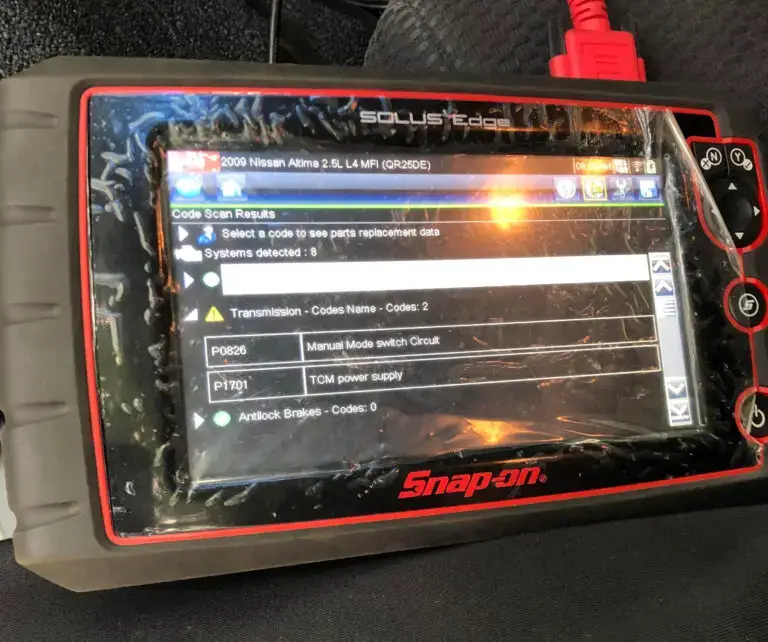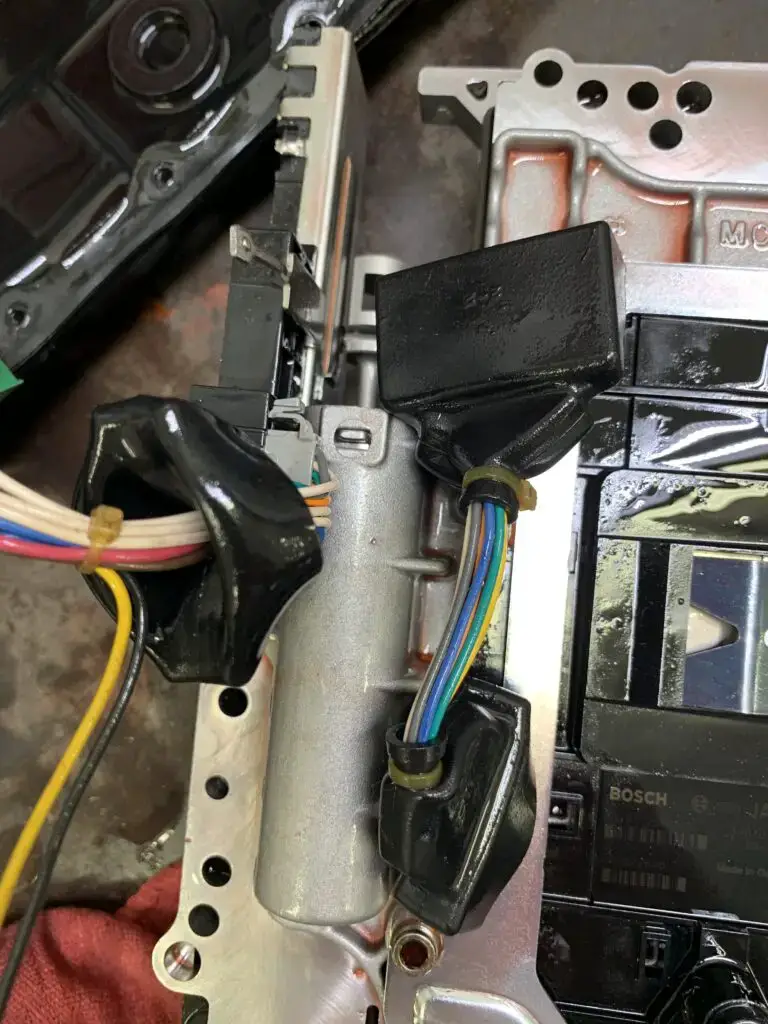P1701 Nissan Code: Get It Fixed With Ease Like Never Before
Hey there! Stumbled upon the P1701 Nissan code, huh? If you find yourself scratching your head trying to decipher its meaning, you’re in the right place.
In this comprehensive guide, we’ll dig deep into the meaning of the P1701 Nissan code, its severity, causes, and the telltale symptoms to watch out for.
But that’s not all – I’ll also provide you with expert tips on diagnosing the issue and fixing it easily.
So, grab your toolbox, and let’s get started!
P1701 Nissan: A Quick Overview
Below is a summary of the P1701 Nissan Code. Check it out!
- Definition: Transmission Control Module (Power Supply)
- Severity: Medium
- DIY Skill Level: Intermediate
- Continue To Drive?: Yes
- Estimated Repair Cost: $75-$200
What Does The P1701 Code Mean On Nissan?
According to the manufacturer’s manual, the P1701 Nissan code is often triggered when the power supply to the transmission control module (TCM) is deliberately shut off. In simpler terms, this code is like a secret message from your vehicle, telling you there’s a hiccup in the power supply to the TCM.
Think of the TCM as the brain of your transmission system, responsible for things like gear shifting and controlling solenoids. Here’s the deal: The TCM relies on a steady and reliable power supply to work its magic.
But sometimes, things go awry. The P1701 code pops up when there’s an interruption or disconnection in the power supply to the TCM. This can happen when you mess with the battery, remove it, or if there’s a pesky wiring issue in the TCM circuit.

Note: Friendly reminder! Sometimes, the P1701 code doesn’t indicate a real problem. When you intentionally cut off the power supply to the TCM, this message might appear on the screen.
To tell the difference between intentional power interruptions and actual malfunctions, consider the situation in which the code appears. If it shows up without you intentionally cutting off the power supply, it’s likely pointing to a genuine malfunction that needs your attention.
Additionally, it’s worth noting that the P1701 code most commonly appears in the following Nissan models: Altima, Maxima, Murano (2005, 2007), Rogue (2008, 2009, 2011, 2013), Sentra, Altima (2008, 2009, 2011, 2012), Nissan Juke, Sentra (2008, 2010, 2011, 2012), and X-Trail. This code is frequently associated with the P0826 code.
The Severity Of P1701: Is Your Nissan In Danger?
The severity level of the P1701 code can be considered medium. While it doesn’t indicate an immediate danger to your Nissan, it shouldn’t be ignored.
You can continue to drive with the code present, but it is recommended for the short term only. It’s important to address the issue as soon as possible to prevent potential transmission problems.
Listen To Your Car: Recognizing Symptoms Of P1701
Common symptoms associated with the P1701 Nissan code include:
- Illuminated check engine light (CEL) or service engine soon (SES) warning light
- Battery light on
- Transmission-related issues, such as rough shifting, slipping, or hesitation
Read more: 4 Most common transmission control module symptoms
Solving The Puzzle: Common Causes Of P1701 Nissan Code
Based on my experience dealing with Nissan vehicles, the P1701 code is often caused by harness or connector issues.
Picture this: open or shorted circuits in the battery or ignition switch or a glitch in the TCM circuit. Those pesky wires! Sometimes they get damaged—frayed or broken, you know. And loose or corroded connectors? They can mess with the electrical connections, triggering the P1701 code.

(Image credit: JustAnswer)
In rare cases, I’ve also seen instances where the TCM itself can go wrong, leading to this code. However, harness and connector issues tend to be more common culprits.
Read more: 6 Easy Ways To Find What Transmission You Have [with Transmission Lookup Tool]
Fixing P1701: Step-by-Step Repair And Diagnosis
Now that we’ve uncovered the common causes behind the P1701 Nissan code, it’s time to roll up our sleeves and dive into the world of repairs.
An effective way to tackle the P1701 code is by examining the harnesses and connectors associated with the battery, ignition switch, and TCM. Look for damage, loose connections, or corrosion.
Let’s dive into the nitty-gritty details with our step-by-step procedure below.
Essential Tools And Parts
- Wire connectors
- Nissan ignition switch
- Multimeter
- Inspection mirror
- Electrical tape
- Pullers
- Screwdriver
- Electrical cleaner
Step-by-step Procedure
Step 1: Use a multimeter to verify the TCM power source. Check the voltage at specific terminals of the TCM harness connector.
Step 2: Inspect the TCM ground circuit. Check the continuity between specific terminals of the TCM harness connector and ground.
Step 3: Confirm the TCM power circuit by measuring the voltage at specific terminals of the TCM harness connector.
Step 4: Examine the harnesses between the TCM and IPDM E/R, as well as between the TCM and the battery, ensuring continuity between specific terminals. If any damaged or faulty components are found, repair or replace them accordingly.
Step 5: Check the continuity between specific terminals of the TCM harness connector and ground. Then, inspect and replace faulty components, such as fuses or the ignition switch, as needed.
Step 6: Detect malfunctioning items by inspecting the TCM connector pin terminals for damage or loose connections with the harness connector. Repair or replace any faulty or damaged components/parts found during this inspection.
Please note that specific Nissan models may have additional information or variations related to this code. To ensure accuracy, refer to your vehicle’s service manual and consult relevant Technical Service Bulletins (TSBs). Those documents might have specific directions on checking fuses, battery voltage, terminal locations, and other relevant details.
DIY Repair Level And Estimated Costs For Fixing P1701 Code In Nissan Vehicles
The above procedure requires an intermediate level of automotive repair knowledge and experience. It involves performing various electrical tests, checking harnesses, and potentially replacing damaged components. If you have experience in automotive diagnostics and repair, you can confidently tackle this repair.
However, if you are unsure or lack experience, seeking professional assistance’s always a good idea. This approach can help you avoid unnecessary expenses resulting from inaccurate diagnoses or improper repairs.
To give you a general idea of the estimated repair costs for the P1701 code in Nissan vehicles, here’s a breakdown of the main repair tasks and their associated costs:
| Repair Task | Estimated Cost Range |
| Diagnostic Fee | $80 – $150 |
| Wiring Harness Repair/Replacement | $200 – $500 |
| Fuse Replacement | $10 – $50 |
| Ignition Switch Replacement | $100 – $300 |
| TCM Replacement | $400 – $700 |
| Professional Labor (per hour) | $80 – $150 |
Please keep in mind that these are rough estimates, and the actual costs can vary depending on factors such as your specific Nissan model, labor rates in your area, and the extent of the repair required.
It’s always recommended to consult with local repair shops or dealerships to get more accurate and tailored cost estimates for your specific situation.
P1701 Nissan Infographic

Final Thoughts
In a nutshell, promptly addressing the P1701 Nissan code is crucial to avoid potential transmission troubles.
Get to grips with its meaning, symptoms, and causes to make savvy decisions about the repairs needed. Remember to arm yourself with the right tools, follow the steps carefully, and don’t hesitate to seek pro help if required.
Never underestimate the importance of nipping that P1701 code in the bud to keep your Nissan purring like a well-oiled machine.
Got any questions or tales to share?
Drop a comment or pass on this article to fellow gearheads who might find it handy.
Let’s keep the conversation rolling and lend a hand on our automotive adventures!
Reference Sources
- Nialtima, P1701 Transmission Control Module (Power Supply)
- JustAnswer, Code P1701: No Symptoms or Transmission Issues
- 2CarPros, Transmission Codes
